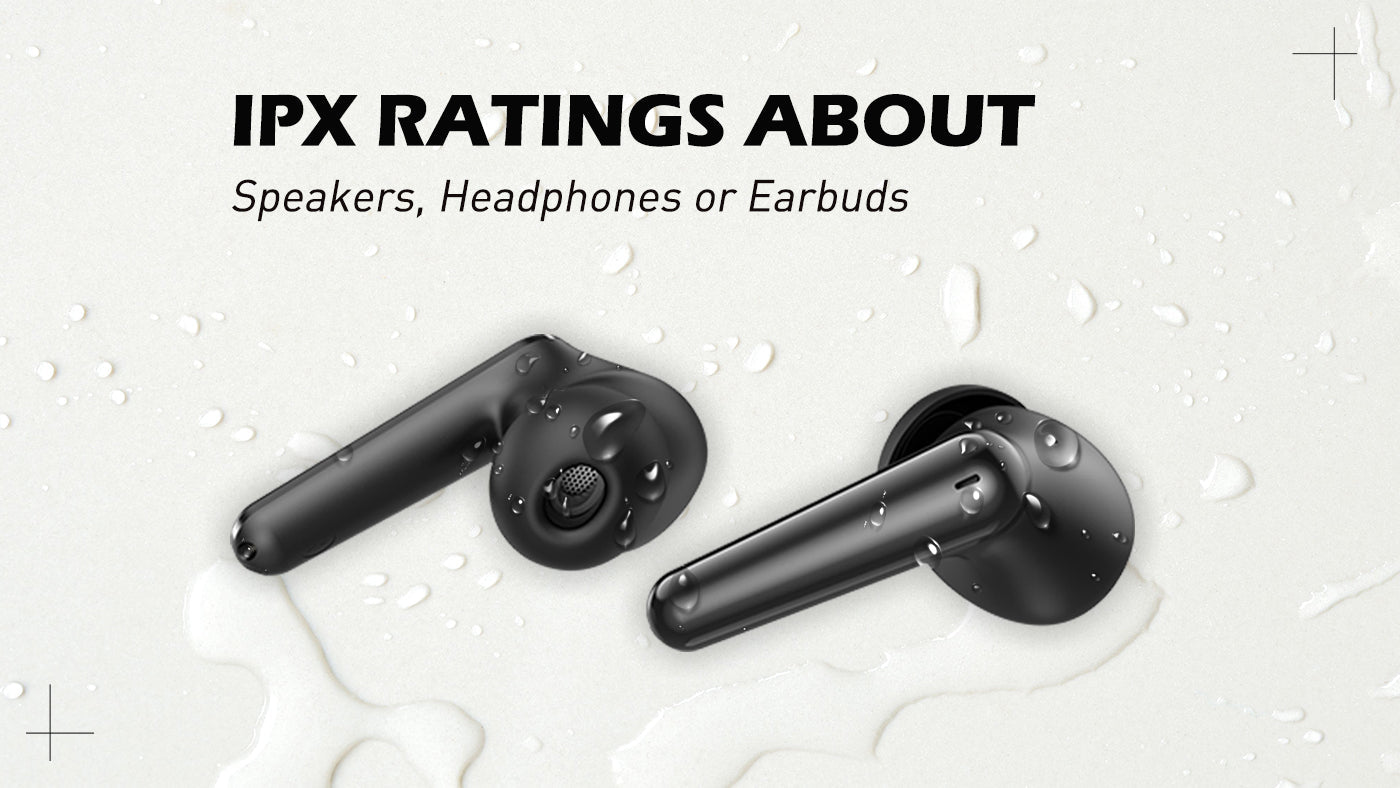If you're in the market for a new pair of headphones, it's important to understand the different types of drivers available. Each type of driver produces a different sound, so it's crucial to select the right one for your needs.
In this post, we'll take a look at six common headphone drivers. We'll explain what each one does and how it affects the sound quality of your music. Armed with this information, you'll be able to choose the perfect set of headphones for your needs. So let's get started!
What Are Headphone Drivers?
Headphone drivers are the small speakers that produce the sound in your headphones. They convert the electrical signals from your music player into sound waves that you can hear.
Magnet
All headphone drivers use a magnet to produce sound. This is because a moving coil of wire produces an electric current when it's placed in a magnetic field. This current is then amplified and sent to the drivers, which convert it into sound.
There are two types of magnets commonly used in headphone drivers: neodymium and ferrite. Neodymium magnets are the most powerful, which means they can produce a stronger magnetic field. This results in better sound quality, but it also makes the drivers more expensive. Ferrite magnets are less powerful, but they're cheaper to produce. As a result, they're often used in lower-priced headphones.
Voice Coils
The voice coil is a coil of wire that's wrapped around the magnet. It's attached to the diaphragm, which is the part of the driver that produces sound. When an electrical current is passed through the voice coil, it produces a magnetic field.
This interacts with the magnet to create vibration, which is then transferred to the diaphragm. The diaphragm vibrates at a frequency that's determined by the frequency of the electrical signal. This produces sound waves that we can hear.
The size of the voice coil affects the quality of sound produced by the driver. A larger voice coil can produce louder sound with less distortion. However, it also makes the driver heavier and more expensive.
Diaphragm
The diaphragm is the part of the driver that produces sound. It's a thin, flexible membrane that's attached to the voice coil. When the voice coil vibrates, it causes the diaphragm to vibrate as well. This produces sound waves that travel through the air and into our ears.
The material of the diaphragm also affects the sound quality. A membrane made of paper or plastic will produce a warm, bass-heavy sound. A metal diaphragm will produce a brighter, more detailed sound. However, it's also more likely to distort at high volumes.
Does The Headphones’ Driver Size Matter?
Yes, the headphones’ driver size does matter. Larger drivers provide more bass and a fuller sound than smaller drivers. They also require more power to drive, so make sure your device is up to the task.
Not all larger drivers are created equal. Some larger drivers can distort at high volumes, while others produce a lot of noise leakage. So, when shopping for headphones, be sure to read reviews to find the best pair for your needs.
Do More Drivers Mean Better Sound?
It depends on the drivers. If they are inferior quality drivers, then more drivers won't mean better sound. However, if the drivers are of good quality and properly placed, then more drivers will mean better sound.
In general, a speaker will have better sound if it has more drivers because each driver can be smaller in size and therefore can be placed in more locations within the speaker cabinet. This means that there will be less of a discrepancy between the sounds coming from different parts of the speaker, which leads to a more balanced overall sound.
6 Types Of Headphone Drivers
Dynamic Driver
A dynamic driver is the most common type of headphone driver. It consists of a magnet, voice coil, and diaphragm.
How it works?
The voice coil is wrapped around the magnet and attached to the diaphragm. When an electrical signal is sent through the voice coil, it produces a magnetic field. This interacts with the magnet to create vibration, which is then transferred to the diaphragm. The diaphragm vibrates at a frequency that's determined by the frequency of the electrical signal. This produces sound waves that we can hear.
Balanced Armature Driver
A balanced armature driver is a type of headphone driver that uses a small magnet and voice coil to create sound. It's often used in earbuds and other small headphones.
How it works?
The way a balanced armature driver works is similar to a dynamic driver. The voice coil is wrapped around the magnet and attached to the diaphragm. In this case, however, the magnet is much smaller. When an electrical signal is sent through the voice coil, it produces a magnetic field.
It interacts with the magnet to create vibration, which is then transferred to the diaphragm. Then, the diaphragm vibrates at a frequency that's determined by the frequency of the electrical signal. All of this produces sound waves that we can hear.
Planar Magnetic Driver
A planar magnetic driver is a type of headphone driver that uses a flat coil of wire and a magnet to create sound. It's often used in high-end headphones.
How it works?
The planar magnetic driver consists of a flat coil of wire that's suspended between two magnets. When an electrical signal is sent through the coil, it creates a magnetic field. This interacts with the magnets to create vibration, which is then transferred to the diaphragm. On a typical planar magnetic driver, the diaphragm is a thin film of metal.
Electrostatic Driver
An electrostatic driver is a type of headphone driver that uses an electrically charged diaphragm and electrodes to create sound. It's often used in high-end headphones.
How it works?
The electrostatic driver consists of a thin, electrically charged diaphragm that's suspended between two electrodes. When an electrical signal is sent through the electrodes, it creates an electrostatic field. When this field interacts with the diaphragm, it causes it to vibrate. This vibration is then transferred to the air, producing sound waves that we can hear.
Piezoelectric Driver
A piezoelectric driver is a type of headphone driver that uses a piezoelectric material to create sound. The most common piezoelectric material is ceramic.
How it works?
When an electrical signal is sent through a piezoelectric material, it produces a mechanical vibration. This vibration is then transferred to the diaphragm, which produces sound waves that we can hear. The frequency of the sound waves is determined by the frequency of the electrical signal.
Magnetostriction Driver
A magnetostriction driver is a type of headphone driver that uses a magnetostrictive material to create sound. The most common magnetostrictive material is iron.
How it works?
In a magnetostriction driver, an electrical signal is sent through a coil of wire that's wrapped around an iron rod. This creates a magnetic field. It also causes the iron rod to change shape slightly. This change in shape produces vibration, which is then transferred to the diaphragm. We hear this as sound.
How Do You Choose The Best Driver Type?
The type of headphone driver that's best for you depends on your needs and preferences. If you want the best sound quality, you'll want a driver that can produce a wide range of frequencies.
If you're looking for durability, you'll want a driver that's built to last. And if you're on a budget, you'll want a more affordable driver. Let's take a look at each of these factors in more detail.
Sound Quality
If you're looking for the best sound quality, you'll want a headphone driver that can produce a wide range of frequencies. The wider the frequency range, the more detail you'll be able to hear in your music. Look for a driver that can reproduce frequencies between 20 Hz and 20 kHz.
Driver Size
The size of the headphone driver is another important factor to consider. Larger drivers can produce more bass, while smaller drivers are more compact and lightweight. If you're looking for the best sound quality, you'll want a larger driver. But if you're looking for a more portable option, you'll want a smaller driver.
Power Requirements
Some headphone drivers require a power source, while others don't. If you're looking for a more portable option, you'll want a driver that doesn't require a power source. But if you're looking for the best sound quality, you'll want a driver that does require a power source.
Impedance
Impedance is a measure of how much electrical resistance a headphone driver has. Lower impedance drivers are easier to drive, but they're also more susceptible to noise and distortion. If you're looking for the best sound quality, you'll want a higher impedance driver. But if you're looking for a more portable option, you'll want a lower impedance driver.
Sensitivity
Sensitivity is a measure of how loud a headphone driver will be when given an electrical signal of a certain voltage. The higher the sensitivity, the louder the driver will be. If you're looking for the best sound quality, you'll want a higher-sensitivity driver. But if you're looking for a more portable option, you'll want a lower sensitivity driver.
Frequency Response
The frequency response is the range of frequencies that a headphone driver can reproduce. The wider the frequency response, the more detail you'll be able to hear in your music. Look for a driver with a frequency response of 20 Hz to 20 kHz.
Distortion
Distortion is any change to the shape of the waveform of a signal. It can make music sound fuzzy or unclear. The lower the distortion, the better the sound quality will be. Look for a driver with less than 1% distortion.
Dynamic Range
The dynamic range is the difference between the loudest and softest sounds that a headphone driver can reproduce. The wider the dynamic range, the more detail you'll be able to hear in your music. Look for a driver with a dynamic range of at least 90 dB.
Signal-To-Noise Ratio
The signal-to-noise ratio is the ratio of the strength of the signal to the strength of the noise. The higher the ratio, the less noise you'll hear in your music. Look for a driver with a signal-to-noise ratio of at least 80 dB.
Conclusion
When shopping for headphones, it’s important to know the difference between the types of drivers available. This will help you make a more informed decision about which headphones are right for you.
We hope this article has helped educate you on the different types of headphone drivers and given you a better understanding of how they work.



